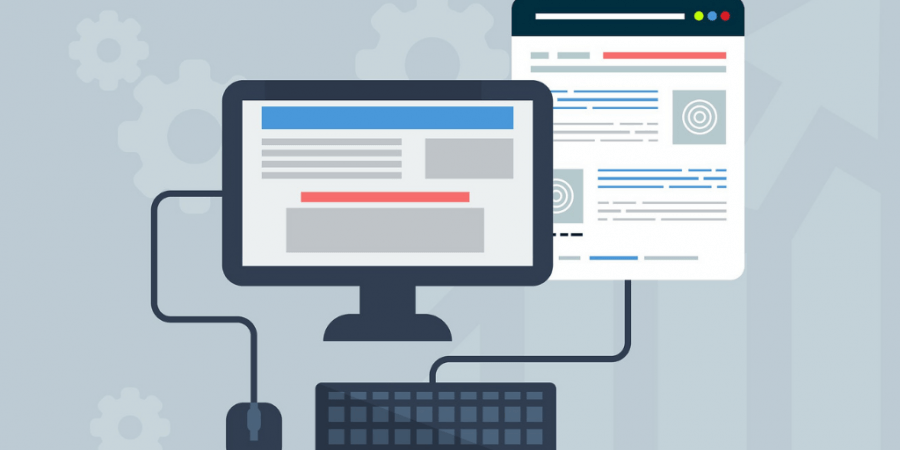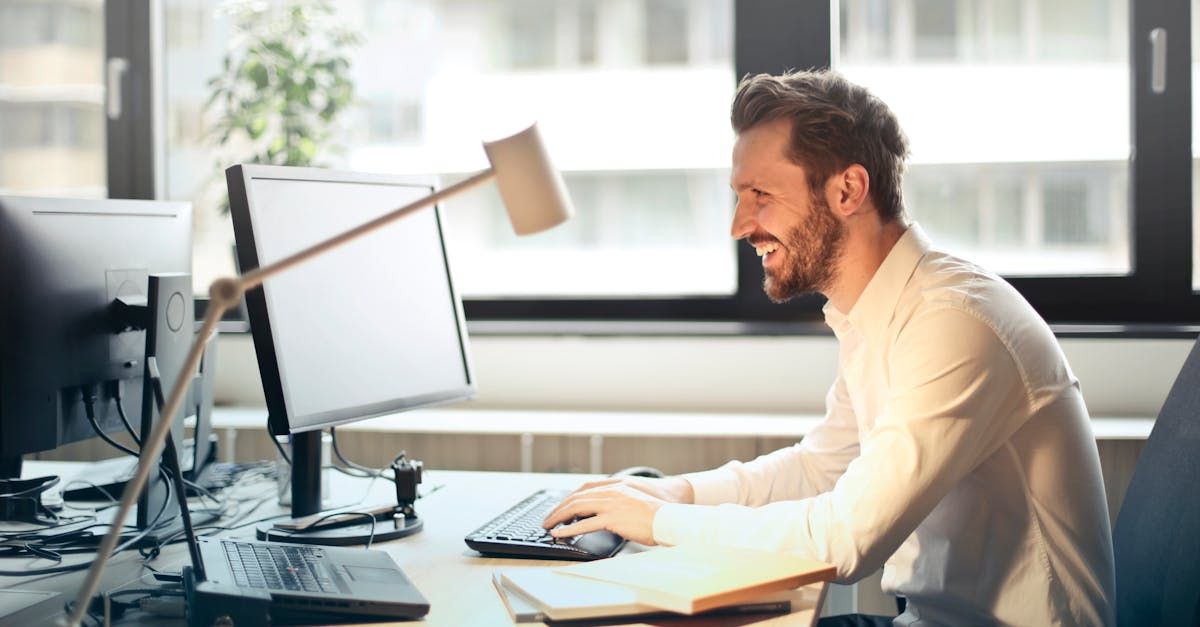10 Reasons Why You Should Redesign Your Website
Editor note: This article has been updated to provide more in-depth information and accuracy as of 2018
10 Reasons Why You Should Redesign Your Website
We have said before that your website is one of the best investments you can make. Not only does it act as a passive lead magnet, but it also enables you to convert prospects with little to no active effort.
Depending on your business and what you sell, your customers may need additional information to cement their purchasing decisions. To which, they will normally turn to your website to educate themselves about you, your product and your values.
In order to convert these customers, your website needs to be the best it can be and have the right information.
Your website acts as the first impression the user has with your brand.
Website redesigns take significant work. More often than not, a redesign comes from a need to update a 5+ year old website. In this case, the redesign is almost like an entirely new project.
Understanding the right time to have a redesign is crucial. Not only are you going to need to invest resources, both monetary and staff, but you also need to have a sufficient amount of time to work with your developer to achieve the redesign.
So, how do you know when it's time to redesign?
Your Website Is Not Mobile Friendly
As of Q3 2018, 52.4% of website traffic is made on mobiles . More importantly "Nearly 8 in 10 of consumers would stop engaging with content that doesn’t display well on their device" .
As mobile usage has risen in the last few years, the importance of mobile-friendly websites has equally grown in importance.
If you have ever visited a website that isn't mobile friendly, you know how difficult and time consuming it is to manually zoom into each content field. Occasionally, this can go a step further where buttons appear inaccessible and off the screen due to the original design not supporting the mobile screen size.
Web design practices operate on a mobile index first; creating a mobile design before the desktop design.
If your website is not mobile friendly, you may be turning away over half of your total viewership. These viewers aren't likely to return to your website in the foreseeable future. Prospects and viewers will click the back button and turn to your competitor's site as an alternative.
Part of your audience base will want to research during their commutes or during their downtime. They may not always have access to their desktop computer.
As your website is available 24/7, you want to ensure that you are not turning away any potential customers.
The Design Is Outdated
The main reason a website is redesigned is that it looks outdated. It does not take 10 years of web design experience to know when a website was designed and built in the early 2000's.
An outdated website is a crux to both brand and business. Not only does it turn away potential customers, but it also damages the brand's reputation; making your brand look outdated and unprofessional.
This also raises multiple different questions. Is it safe to use this website? Are they still operating? Why have they not replaced the site with something up to date?
Questions further amplify your brand perception. If your brand is associated with a negative perception, in this case: unprofessional, it will affect the buying habits of those that enter the site.
The CMS Is Difficult to Manage
As a website owner, you want the ability to make simple changes when you need to. There will always be updates that you need that will require a web developer to be on hand. However, you do not want to be in a position where you simply cannot update your site at all.
Depending on when the site was built, it may be using an outdated CMS. Worst case scenario, it isn't using on at all.
Businesses change and adapt, as such, you need the flexibility to do the same for your website at a moments notice.
If your current content management system does not have the usability that you would like and/or key features simply aren't functioning anymore, it could be time to invest in a redesign.
Your Competitor Has a New Website
As a business and brand, you are always in constant competition with those around you. If you sell predominantly online then you will be competing with numerous brands across the globe.
During your market research stage, you will have needed to identify your top competitors. These are other businesses that sell products/services closely related to yours, thus, will be in continuous competition for customers.
Similarly, if you are a local business, it could also imply that the business is in close proximity to you.
Whilst the quality of products and overall level of customer feedback is important to get the edge over your competitor, so is your website.
If your website is inferior to theirs in every way, it tells your audience that you aren't the right person to buy from. Instead, your competitor will look more appealing.
Whilst this is not necessarily the most ideal reason to upgrade your website, it is crucial nonetheless.

There Are Outdated Features And/Or Functionality
If your website is old it is likely to have outdated features. This can be elements like flash, V1 of Googles reCAPTCHA and buttons that just no longer work. This not only sends negative messages to those who end up on the site, but it's also awful for user experience.
When someone visits your website they expect everything to work. If it doesn't, they are more likely to select a different website than figure out how to make it work (if they even can).
This can also be a common problem with certain browsers. If your website is outdated in and of itself then it features may no longer work with certain browsers.
The UI Is Hard to Navigate
Following on from the last points, if your UI is hard to navigate it's going to be causing problems for your users.
Some websites still face this as a common issue. If you've ever been called by a customer and they ask how do they find something, then you know your navigation isn't serving its primary purpose.
Users like a streamlined process.
They also like having access to every page from the get-go, unless it makes sense to bar them off behind other pages.
No-one wants to have to go through 4 button clicks on different pages just to read more about you. It gives the perception that you're trying to hide information. "Why do I need to go through these 4 pages to learn more? Are they hiding something?". Once these thoughts enter the mind of your customer, they no longer trust you.
Both Sales and Leads Drop
If you find that your sales have been dropping and/or the number of leads you are receiving dwindling, it could be time to evaluate your website. When this happens, there are 3 closely related reasons (amongst those already mentioned).
Your Website Is Off-Brand
Re-branding happens. You may turn to alter your logo, print designs, colours and tonality of your brand. Why? because in the grand scheme of re-branding, these take the least amount of resources. Whereas your website requires a lot more.
As a result, your website may be the last asset you re-brand. In the space of the re-branding, users may no longer recognise the old site. It could also have repercussions on awareness.
If a new customer has found your products through social media or print designs, they are likely going to be confused when your website does not match what they were expecting
Your Search Rankings Have Dropped
If your positioning on search engines have taken a hit, your acquisition of new customers will certainly take a hit. Sometimes, this can be detrimental to businesses.
Digital marketers will normally be appointed to keep track of positioning and content marketing. However, algorithm changes can directly impact businesses that are not up to speed.
Similarly, issues with load speed and security can impact ranking positioning.
If you find that your sales are not following their normal suit, you may need to audit your search engine rankings. If these have dropped considerably in the past then your next step will be to find out why.
More often than not, if your website is 5+ years old, it's likely that there is a problem onsite that is affecting the way Google is crawling your website.
You can begin implementing minor changes, introducing a CDN and improving the security. However, if you are going to be involving a web developer to make these changes, it might be time to consider a new website at the same time.
Your Website Is Not in Line with Your Content Strategy
Similarly to re-branding, it can be confusing for visitors if they land on your website and your content does not match your other profiles.
It's important as a business to alter your website in line with the content you are publishing on social media and other communication methods like email.
If you are pushing a new campaign on social media you need to ensure that there is some indication to it on your website. If not, users may turn to your website for more information or enquire but they don't find anything closely related.
This may not have been edited because your CMS is hard to use or there isn't one at all. Meaning it would cost you significantly more to add it to your website and swap once you run a different campaign.
A new website with an up to date CMS would negate this problem entirely.
If you're struggling with your CMS and/or looking to redesign your website contact us at sales@devmac.co.uk and we'll walk through your requirements.






